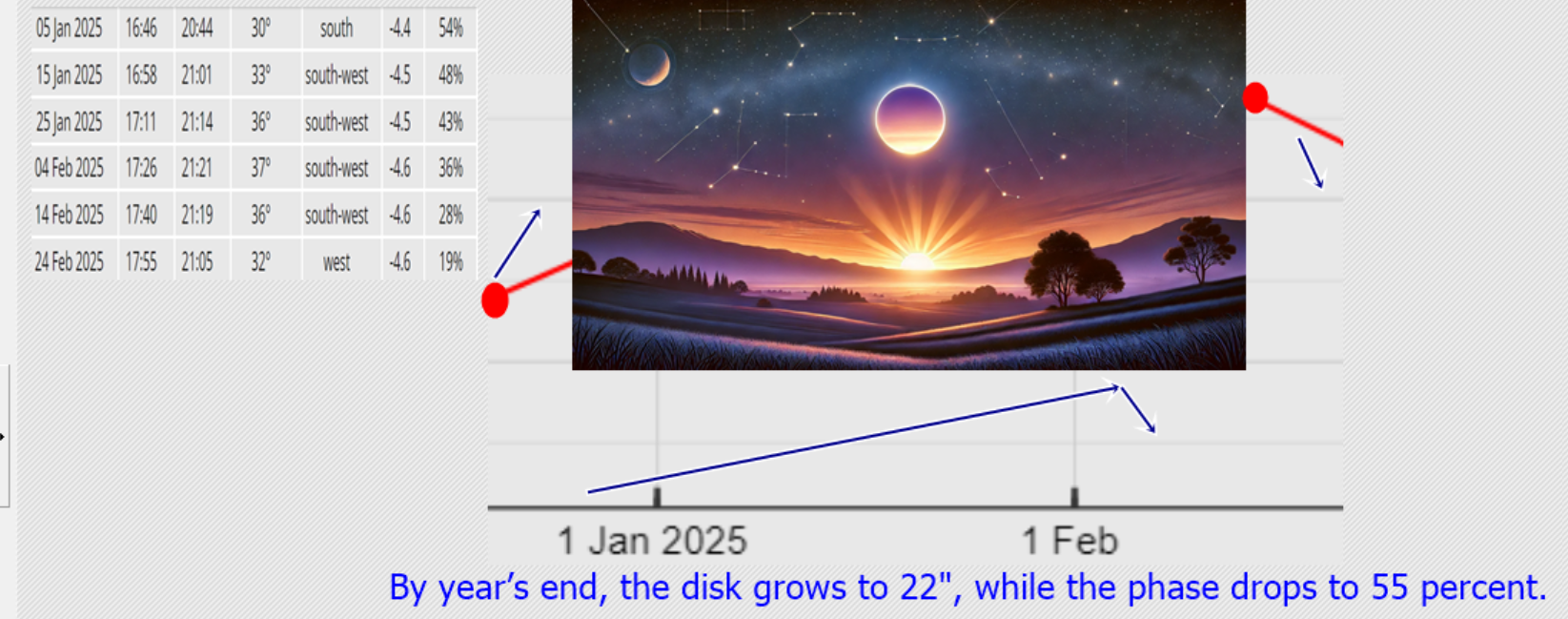The Winter Solstice, which occurs around December 21st or 22nd in the Northern Hemisphere, marks the shortest day and longest night of the year. This event happens when the Earth's axial tilt is farthest away from the Sun, and the Sun reaches its lowest maximum elevation in the sky.
Key Points About the Winter Solstice:
Astronomical Significance:
It marks the start of astronomical winter in the Northern Hemisphere and astronomical summer in the Southern Hemisphere.
After the solstice, daylight gradually increases until the Summer Solstice in June.
Cultural Celebrations:
Many cultures celebrate the Winter Solstice with festivals and rituals symbolizing rebirth and the return of the Sun.
Examples include:
Yule: A Pagan festival honoring the Sun's return.
Dongzhi Festival: Celebrated in East Asia, focusing on family reunions and eating warming foods like dumplings.
Inti Raymi: In Inca tradition, though celebrated in June in the Southern Hemisphere, it reflects similar reverence for the Sun.
Astronomy Behind It:
It happens when the Sun is directly over the Tropic of Capricorn (23.5° South latitude).
Earth's axial tilt (23.5°) and orbit around the Sun cause the variation in daylight hours throughout the year.
Symbolism:
It represents hope, renewal, and the promise of longer days ahead, aligning with themes of light overcoming darkness.
Would you like information on how it's celebrated in a specific culture or region?
In the Southern Hemisphere, the Winter Solstice for the Northern Hemisphere corresponds to the Summer Solstice, which typically falls around December 21st or 22nd. This marks the longest day and shortest night of the year for those living south of the equator.
Key Points About the Summer Solstice in the Southern Hemisphere:
Astronomical Significance:
It marks the beginning of astronomical summer in the Southern Hemisphere.
The Sun is directly overhead at the Tropic of Capricorn (23.5° South latitude).
Daylight:
Locations close to the poles, such as Antarctica, experience 24-hour daylight during this time (a phenomenon known as the Midnight Sun).
Countries like Australia, New Zealand, South Africa, and parts of South America enjoy longer days and warmer weather.
Cultural Celebrations:
Many cultures and traditions in the Southern Hemisphere celebrate the summer season rather than the solstice itself.
Examples include:
Christmas in summer: In Australia and New Zealand, Christmas is celebrated during the height of summer, often with beach outings, barbecues, and outdoor festivities.
Indigenous communities may have unique ceremonies or observances connected to the Sun and the changing seasons.
Weather Patterns:
The solstice often aligns with peak summer temperatures in many regions.
However, in areas like the southern tip of South America, weather may still feel relatively cool due to latitude.
Key Points About the Winter Solstice:
Astronomical Significance:
It marks the start of astronomical winter in the Northern Hemisphere and astronomical summer in the Southern Hemisphere.
After the solstice, daylight gradually increases until the Summer Solstice in June.
Cultural Celebrations:
Many cultures celebrate the Winter Solstice with festivals and rituals symbolizing rebirth and the return of the Sun.
Examples include:
Yule: A Pagan festival honoring the Sun's return.
Dongzhi Festival: Celebrated in East Asia, focusing on family reunions and eating warming foods like dumplings.
Inti Raymi: In Inca tradition, though celebrated in June in the Southern Hemisphere, it reflects similar reverence for the Sun.
Astronomy Behind It:
It happens when the Sun is directly over the Tropic of Capricorn (23.5° South latitude).
Earth's axial tilt (23.5°) and orbit around the Sun cause the variation in daylight hours throughout the year.
Symbolism:
It represents hope, renewal, and the promise of longer days ahead, aligning with themes of light overcoming darkness.
Would you like information on how it's celebrated in a specific culture or region?
In the Southern Hemisphere, the Winter Solstice for the Northern Hemisphere corresponds to the Summer Solstice, which typically falls around December 21st or 22nd. This marks the longest day and shortest night of the year for those living south of the equator.
Key Points About the Summer Solstice in the Southern Hemisphere:
Astronomical Significance:
It marks the beginning of astronomical summer in the Southern Hemisphere.
The Sun is directly overhead at the Tropic of Capricorn (23.5° South latitude).
Daylight:
Locations close to the poles, such as Antarctica, experience 24-hour daylight during this time (a phenomenon known as the Midnight Sun).
Countries like Australia, New Zealand, South Africa, and parts of South America enjoy longer days and warmer weather.
Cultural Celebrations:
Many cultures and traditions in the Southern Hemisphere celebrate the summer season rather than the solstice itself.
Examples include:
Christmas in summer: In Australia and New Zealand, Christmas is celebrated during the height of summer, often with beach outings, barbecues, and outdoor festivities.
Indigenous communities may have unique ceremonies or observances connected to the Sun and the changing seasons.
Weather Patterns:
The solstice often aligns with peak summer temperatures in many regions.
However, in areas like the southern tip of South America, weather may still feel relatively cool due to latitude.
The Winter Solstice, which occurs around December 21st or 22nd in the Northern Hemisphere, marks the shortest day and longest night of the year. This event happens when the Earth's axial tilt is farthest away from the Sun, and the Sun reaches its lowest maximum elevation in the sky.
Key Points About the Winter Solstice:
Astronomical Significance:
It marks the start of astronomical winter in the Northern Hemisphere and astronomical summer in the Southern Hemisphere.
After the solstice, daylight gradually increases until the Summer Solstice in June.
Cultural Celebrations:
Many cultures celebrate the Winter Solstice with festivals and rituals symbolizing rebirth and the return of the Sun.
Examples include:
Yule: A Pagan festival honoring the Sun's return.
Dongzhi Festival: Celebrated in East Asia, focusing on family reunions and eating warming foods like dumplings.
Inti Raymi: In Inca tradition, though celebrated in June in the Southern Hemisphere, it reflects similar reverence for the Sun.
Astronomy Behind It:
It happens when the Sun is directly over the Tropic of Capricorn (23.5° South latitude).
Earth's axial tilt (23.5°) and orbit around the Sun cause the variation in daylight hours throughout the year.
Symbolism:
It represents hope, renewal, and the promise of longer days ahead, aligning with themes of light overcoming darkness.
Would you like information on how it's celebrated in a specific culture or region?
In the Southern Hemisphere, the Winter Solstice for the Northern Hemisphere corresponds to the Summer Solstice, which typically falls around December 21st or 22nd. This marks the longest day and shortest night of the year for those living south of the equator.
Key Points About the Summer Solstice in the Southern Hemisphere:
Astronomical Significance:
It marks the beginning of astronomical summer in the Southern Hemisphere.
The Sun is directly overhead at the Tropic of Capricorn (23.5° South latitude).
Daylight:
Locations close to the poles, such as Antarctica, experience 24-hour daylight during this time (a phenomenon known as the Midnight Sun).
Countries like Australia, New Zealand, South Africa, and parts of South America enjoy longer days and warmer weather.
Cultural Celebrations:
Many cultures and traditions in the Southern Hemisphere celebrate the summer season rather than the solstice itself.
Examples include:
Christmas in summer: In Australia and New Zealand, Christmas is celebrated during the height of summer, often with beach outings, barbecues, and outdoor festivities.
Indigenous communities may have unique ceremonies or observances connected to the Sun and the changing seasons.
Weather Patterns:
The solstice often aligns with peak summer temperatures in many regions.
However, in areas like the southern tip of South America, weather may still feel relatively cool due to latitude.
0 Comments
0 Shares
512 Views














